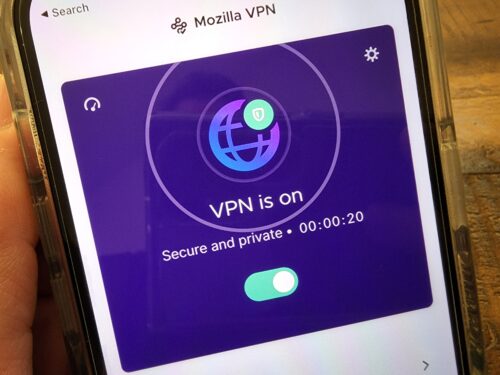Giveaway Best – Accessing blocked sites can be a hassle, whether you’re at school, work, or home. While VPNs are a popular solution, they aren’t always accessible or allowed. Fortunately, there are several alternative methods you can use to bypass restrictions and access the content you need. In this article, we’ll explore various ways to access blocked sites without a VPN, ensuring you can stay connected wherever you are.
Understanding Internet Restrictions
First, let’s understand why sites are blocked in the first place. Schools, workplaces, and even home networks often restrict access to certain websites to maintain productivity, protect against malicious content, or comply with legal regulations. Commonly blocked sites include social media platforms, streaming services, and certain news websites.
Using Proxy Servers
What is a proxy server?
A proxy server acts as an intermediary between your device and the internet. When you use a proxy, your internet requests are routed through the proxy server, which can mask your IP address and help you access blocked content.
How to find reliable proxy servers
Finding a reliable proxy server is crucial. Many free proxies are available, but they can be slow or insecure. Look for reputable proxy services with good reviews. Websites like “ProxySite” or “Hidester” are good starting points.
Step-by-step guide to using a proxy server
- Go to a proxy website.
- Enter the URL of the site you want to access.
- Select a server location if the option is available.
- Click “Go” or “Enter.”
Utilizing Browser Extensions
Popular browser extensions for bypassing restrictions

Browser extensions can be an easy way to bypass site restrictions. Popular extensions include Hola, ZenMate, and ProxMate. These extensions often come with a simple on/off switch to activate the service.
Installation and setup
- Open your browser’s extension store (e.g., Chrome Web Store).
- Search for the desired extension.
- Click “Add to Chrome” (or the equivalent for your browser).
- Follow the on-screen instructions to set up the extension.
Pros and cons
Pros:
- Easy to install and use.
- Often free or low-cost.
Cons:
- Can slow down your browsing speed.
- May not work on all sites.
Smart DNS Services
Explanation of Smart DNS
Smart DNS services reroute only the information that helps identify your location, unlike a VPN which routes all your data. This makes it faster and ideal for streaming.
How it differs from VPN
Smart DNS doesn’t encrypt your data, so it’s less secure but faster than a VPN. It’s a good choice for accessing geo-blocked streaming content.
Setting up Smart DNS
- Sign up for a Smart DNS service like Unlocator or Smart DNS Proxy.
- Follow the service’s instructions to configure your device’s DNS settings.
- Enjoy access to blocked content.
Using the Tor Browser
What is the Tor Browser?
The Tor Browser is a free, open-source browser that anonymizes your internet traffic through a volunteer overlay network.
How to download and install Tor
- Visit the Tor Project website.
- Download the Tor Browser for your operating system.
- Install the browser and follow the setup instructions.
Benefits and limitations of Tor
Benefits:
- High level of anonymity.
- Can bypass most restrictions.
Limitations:
- Slower browsing speed.
- Some websites may block Tor traffic.
Google Translate as a Proxy
How Google Translate can be used to access blocked sites
Google Translate can act as a simple proxy by translating the page you want to access. It works because many filters don’t block Google services.
Step-by-step guide
- Go to Google Translate.
- Enter the URL of the blocked site in the translation box.
- Select any language to translate the page into.
- Click the translated link to access the site.
Wayback Machine
Accessing archived versions of websites
The Wayback Machine, provided by the Internet Archive, allows you to view archived versions of websites. It can be useful if the current site is blocked.
How to use the Wayback Machine effectively
- Go to the Wayback Machine website.
- Enter the URL of the blocked site.
- Browse through the archived snapshots to find the content you need.
Mobile Data Tethering
What is mobile data tethering?
Mobile data tethering allows you to use your phone’s internet connection on another device, bypassing restrictions on the primary network.
How to tether mobile data to access blocked sites
- Enable mobile data on your smartphone.
- Turn on the tethering option (Wi-Fi hotspot or USB tethering).
- Connect your other device to the mobile hotspot.

URL Shorteners
How URL shorteners can bypass restrictions
URL shorteners can sometimes bypass filters that block specific URLs by masking the actual address.
Popular URL shortening services
- Bitly
- TinyURL
- Ow.ly
Modifying DNS Settings
How to change DNS settings on various devices
Changing your DNS settings can help bypass certain blocks. Google’s Public DNS and Cloudflare’s DNS are popular options.
Recommended DNS services
- Google Public DNS (8.8.8.8 and 8.8.4.4)
- Cloudflare DNS (1.1.1.1 and 1.0.0.1)
Steps to change DNS settings
- Open your device’s network settings.
- Find the DNS settings option.
- Enter the new DNS addresses.
- Save changes and restart your connection.
Using IP Addresses Instead of URLs
Finding a site’s IP address
Sometimes, entering the IP address of a website instead of its URL can bypass restrictions. Use tools like “ping” or “DNS lookup” to find the IP address.
How using IP addresses can bypass restrictions
Type the IP address directly into the browser’s address bar. This method works if the block is on the URL level rather than the IP level.
Accessing Sites via Email Services
How to use email services to fetch web content
Some services allow you to request web pages via email. You send an email with the URL, and the service replies with the content.
Popular email services for this method
- Web2Mail
- MailMyWeb
Remote Desktop Access
What is remote desktop access?
Remote desktop access allows you to connect to another computer remotely. If the remote computer has unrestricted internet access, you can browse freely.
How to set up and use remote desktop
- Enable remote desktop on the host computer.
- Use remote desktop software like TeamViewer or Chrome Remote Desktop.
- Connect to the host computer from your restricted device.
Conclusion
There are numerous ways to access blocked sites without a VPN, each with its advantages and limitations. By understanding and utilizing these methods, you can stay connected and access the information you need, regardless of restrictions. Remember to use these methods responsibly and ensure your online activities remain secure.
FAQs about How to Access Blocked Sites Without VPN
Can these methods be used on mobile devices?
Yes, most of these methods can be used on mobile devices. Browser extensions, Smart DNS, and mobile data tethering are particularly mobile-friendly.
Are these methods legal?
The legality depends on your location and the specific restrictions in place. Always ensure you are not violating any laws or regulations.
How can I ensure my privacy while using these methods?
Using secure methods like the Tor Browser and reputable proxy servers can help protect your privacy. Avoid sharing sensitive information when using less secure methods.
What if these methods don’t work?
If these methods don’t work, the restrictions in place may be very robust. Consider discussing the issue with the network administrator or exploring other options like secure web proxies.
Are there any risks to using these methods?
Yes, some methods may expose you to security risks or violate network policies. Use them judiciously and always prioritize your security and privacy.

